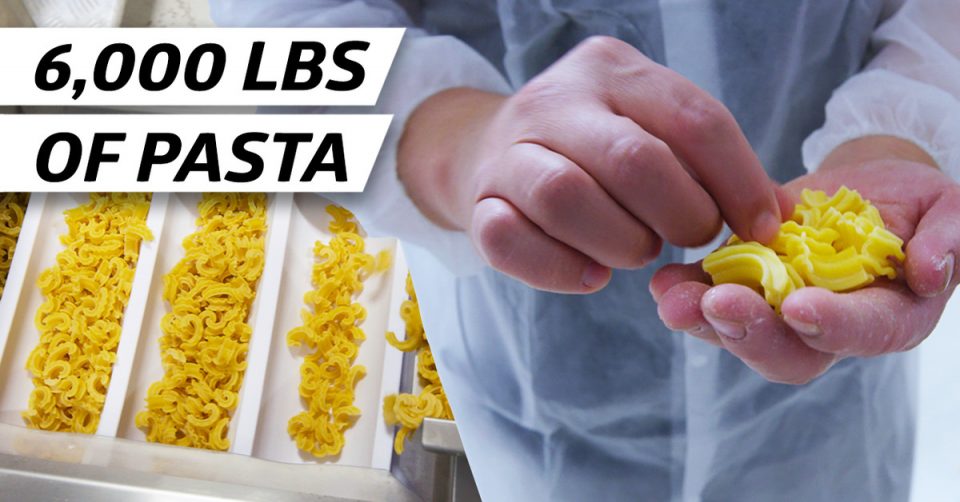“It’s not really common to make new pasta shapes,” says Steven Gonzalez, co-founder of the Sfoglini pasta factory in upstate New York. “As people who are in the pasta business, sometimes it can be a little stale, it’s just a lot of penne, fusilli, spaghetti — so I think that’s kind of why this took so well.”
He’s talking about cascatelli, a new shape of pasta dreamed up by Dan Pashman, host and creator of the Sporkful podcast . Pashman set out to create a pasta that had, in his mind, the optimal shape for holding sauce, getting pronged by a fork, and the most satisfying chew. Once he had his perfect shape designed, Pashman teamed up with Gonzalez to have Sfoglini manufacture it. “We were originally supposed to sell 5,000 pounds and call it a day,” says Gonzalez. “But we’ve kept going, so now we’ve sold probably 300,000 pounds.”
The Sfoglini pasta factory prides itself on using local, North American ingredients for its pastas, and a slow drying process. Gonzalez also emphasizes his company’s use of traditional bronze dies, versus teflon dies that bigger pasta companies use to create shapes. The bronze dies leave a rough texture, perfect for helping sauce stick to the pasta. They weigh about 100 pounds, and cost about $3,000 to $5,000 each.
Check out the full video to follow Gonzalez throughout his day, and see more of what it takes to manufacture pasta and operate a pasta factory.


